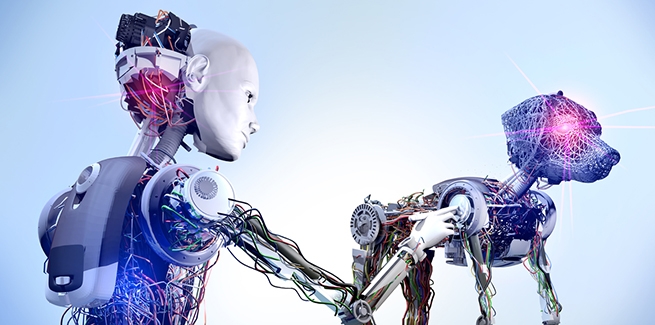AI could help you diagnose disease by scanning your clinical notes

Say the US Food and Drug administration has issued another pet food recall. Some animals are dying. Are your patients at risk?
Imagine being able to comb through all your patient records with a couple of keystrokes and identify how many patients in the last month came in presenting with the same set of gastrointestinal symptoms.
Scientists at Stanford University teamed up with veterinarians at Colorado State University (CSU) College of Veterinary Medicine and Biomedical Sciences to develop an artificial intelligence (AI) algorithm that can help you do just that, as well as predict diseases and conditions for which your patients may be at risk. The algorithm, called DeepTag, works by analyzing veterinarians’ typed-up clinical notes and assigning codes to specific medical conditions.
A paper describing DeepTag was published last fall in the journal npg Digital Medicine.
Unlike human medicine, in which electronic health records (EHRs) are the norm and AI is already in use to analyze complex health data to help predict patient outcomes, veterinary medicine doesn’t yet have standardized ways to map free text on a computer into codes that identify a specific disease or condition. Currently, when a patient visits an animal hospital, the veterinarians type up their notes on a computer after the exam and that’s that.
Which means millions of veterinary clinical records with valuable medical information are filed away with no way to electronically extract that information. The scientists who developed DeepTag hope their algorithm will solve that problem by both reading and interpreting clinical notes.
NEWStat reached out to lead researcher James Zou, PhD, assistant professor of biomedical data science at the Stanford University School of Medicine, to ask what implications DeepTag could have on veterinarians’ daily practice of medicine.
Zou said, “The goal of DeepTag is to use machine learning to help standardize veterinary practice, similar to what’s commonly done in human EHRs. DeepTag automatically infers and assigns standard disease diagnosis codes from the clinician’s free text description of the patient symptom and history. Having this disease coding makes it much easier and faster to look up patient history, find similar patients, and survey the entire patient population.”
DeepTag reads those typed-up notes and boils them down into codes that represent specific illnesses, symptoms, and diseases. By recognizing similarities between related disease codes, DeepTag can predict what conditions a particular pet might have or be at risk for. But in order to be able to read those notes, the algorithm had to be taught, or trained, how to decipher human language.
That’s where the veterinarians at CSU came in.
They annotated more than 100,000 curated clinical notes. Each note was a free-text description of a patient visit and was manually tagged with as many as 8 of the 41 SNOMED-CT disease codes. SNOMED-CT (which stands for Systematized Nomenclature of Medicine—Clinical Terms), a standardized, multilingual vocabulary of clinical terminology used by physicians and other health care providers in human medicine for the electronic exchange of clinical health information, was adopted by the veterinary profession in 2002.
Then the Stanford researchers used the CSU data to “teach” DeepTag how to read clinical notes and recognize codes that paired with particular diseases.
That presented DeepTag with a bit of a challenge: The algorithm had to “learn” to adapt to different kinds of sentence structure.
Zou said, “Veterinary clinics are quite heterogeneous, and different clinicians can have distinct writing styles. We have validated DeepTag’s performance in several settings, and the next step would be to fine-tune and validate its accuracy across a larger number of diverse clinics.”
But Zou also said that AI is now much better at understanding human languages and responding to them, and scientists have been able to leverage that progress to build algorithms like DeepTag that can actually read clinical notes and interpret each word. “We’re not explicitly telling [DeepTag] what words are associated with what disease,” Zou said.
Instead, they’ve taught DeepTag to scan for keywords.
So how soon can veterinarians put DeepTag to the test?
Zou said his team plans to put a free version of DeepTag online in January 2019, “where users can put in free text and it returns relevant disease codes.”
Which gives you just enough time to brush up on your grammar.
Photo credit: © iStock/Devrimb
NEWStat Legislation & regulation Advancements & research News



